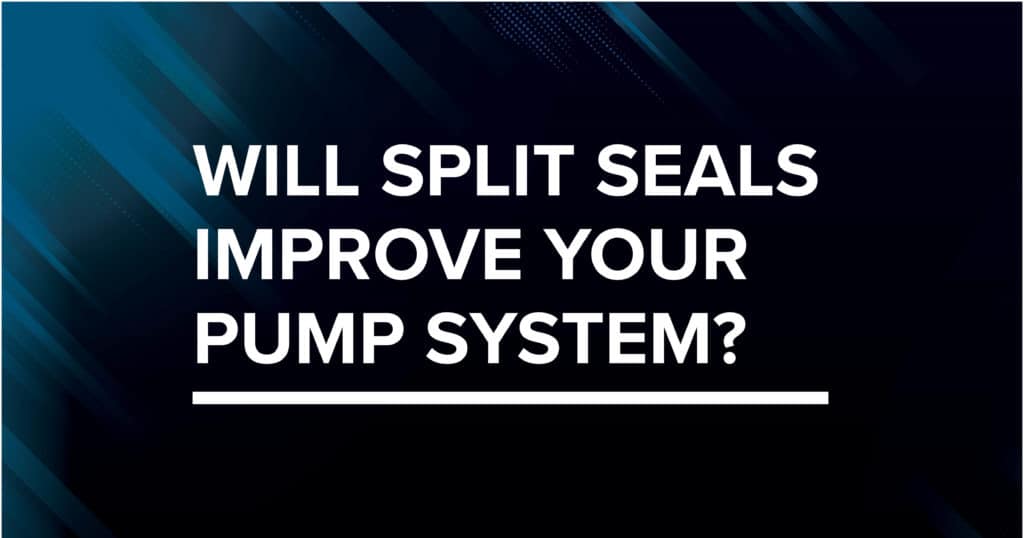Mechanical seal maintenance for pumps and rotating equipment is critical. From a preventative maintenance perspective, it’s a non-negotiable. Consider that seals are a common point of failure, especially when they are not properly maintained. Lack of adequate maintenance results in leaks and performance problems.
One alteration many pump operators will consider is installing split seals. For some applications, a split seal design offers significant benefits. They can reduce maintenance time, improve pump system performance, increase productivity, and reduce operating costs. However, as with any mechanical or technological upgrade, you have to weigh the costs and benefits before deciding if a split seal is right for your operation.
How Do Split Seals Work?
Split mechanical seals feature designs where the all the seal parts are split into at least two halves. They are utilized on pumps and rotating equipment in the same way standard mechanical seals are—to seal the interface between the rotating shaft and the equipment housing.
The primary advantage of split seals is that they are much easier to install and maintain. Traditional mechanical seals must be slid onto the shaft during assembly, making them difficult to inspect and replace during routine maintenance. Similarly, the shaft configuration must be disassembled to access and remove the mechanical seals. Split seals eliminate the need for such a tedious process, and can be installed around the shaft like a pair of handcuffs.
The History of Split Mechanical Seals
Split mechanical seals were first implemented on submarine propulsion shafts in the 1950s. Since then, they have advanced significantly and all types of industrial pump applications with shaft diameters ranging from 1 inch up to 36 inches use them. Today’s split seals offer similar performance characteristics to traditional cartridge-type seals. Some will even provide self-alignment capabilities to minimize wear and extend the lifespan of your equipment.
Leakage Concerns with Split Seals
The biggest knock against split seals is that they may be more prone to leaking. As you can expect, there are more paths for leaks and weak points to occur due to the split components. As the technology has evolved, however, this has become less of a concern. A split mechanical seal that is properly installed and applied will generally last ten years with leak-free performance. That being said, split seals are usually not recommended for processing of hazardous liquids or toxic materials. Those may call for sealless pumps and more robust mechanical seal solutions.
When applied correctly, split mechanical seals will decrease maintenance time and make repairs easier, eliminating sleeve wear and reducing the need for packing adjustments.
Is a Split Seal Solution Right for You?
High-grade split mechanical seals will cost you more upfront, both in the budget and time, as you must discover they are compatible with your equipment. View these as minor trade-offs for the aforementioned benefits. Ultimately, you have to determine if the investment in a split mechanical seal will be worth it in the long run.
To learn more about split seals from the world’s leading mechanical seal manufacturers, contact DXP Pacific today. We will help you determine if a split seal solution is right for your application and select the best seal for your equipment.

